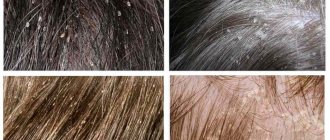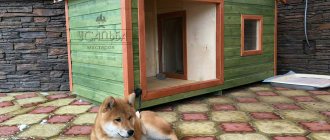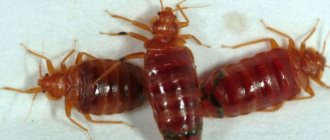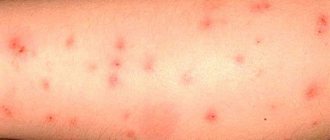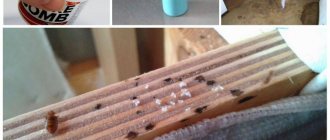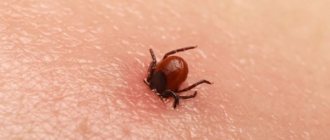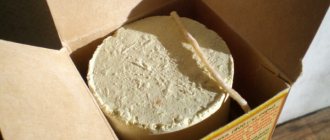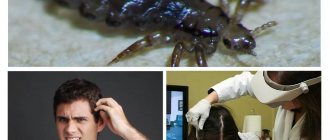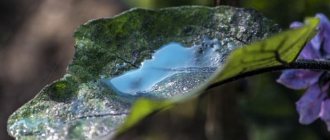Lice are small blood-sucking parasites, which, depending on the species, are localized in the scalp, intimate areas, and on clothing. Due to their tiny size, it may be impossible to identify bloodsuckers at the initial stage of the disease. At first, when the population size is small, people sometimes have no idea about the presence of lice. This is why pediculosis is often discovered in health care facilities or during emergency hospitalization at the initial appointment. How do employees of medical institutions act in such cases, how is treatment for head lice carried out and whether the patient’s consent is required for the procedure.
In what cases is processing carried out?
Pediculosis is usually detected in the emergency department at the sanitary inspection station. If it is possible to detect adult lice and nits in the hair, an additional examination of personal hygiene items and the patient’s belongings is carried out. The patient is transferred to a closed room and examined on a couch. The procedure for getting rid of lice is carried out in an inpatient department. Disinsection measures include comprehensive measures to destroy parasites in hair, body, and clothing.
Pediculosis
Contraindications for treatment may include:
- children under 3 years of age;
- pregnancy, lactation;
- serious condition of the patient;
- a large number of purulent wounds on the skin.
When pediculosis is detected, it is necessary to fill out the appropriate papers in which the patient gives his permission to carry out the procedure. Anti-lice medications are allocated either from the medical fund or purchased at the expense of the patient. The actions of a nurse in case of head lice are limited to preparing and carrying out sanitation, filling out a log in which the data is displayed in table form, and notifying the patient’s relatives.
In cases where lice are detected in children, the health worker reports to the preschool or school institution. According to the new Sanpin on the prevention of lice, an unscheduled inspection is carried out in the class and group, and preventive measures are taken to prevent the spread of lice.
Treatment
Now that you know how lice become infected, how lice reproduce on the head, how many nits an adult lays per day, and after what time the babies hatch from the nits, it will be clear why both treatments must be repeated several times. There are many medications aimed at suppressing the vital activity of insects or exterminating them. All lice remedies can be divided into those that kill only living individuals, and those that also kill nits (preparations for lice - pediculocides with ovicidal activity). There are no less folk methods of combating pediculosis. Read more about pharmaceutical drugs here, and about folk remedies against lice.
Most medications are NOT EFFECTIVE against nits and therefore the head will need to be re-treated. Products that destroy nits contain the substance MALATHION. If you have any chronic diseases, as well as when treating children under two years of age, it is better to consult a doctor for the correct selection of medication.
Now that you know how lice become infected, how lice reproduce on the head, how many nits an adult lays per day, and how long it takes for the babies to hatch from the nits, it will be clear why the treatment must be repeated several times.
Important! The treatment MUST be repeated a week after the initial procedure. In some cases this is done 2-3 times.
Lice are small blood-sucking parasites, which, depending on the species, are localized in the scalp, intimate areas, and on clothing. Due to their tiny size, it may be impossible to identify bloodsuckers at the initial stage of the disease. At first, when the population size is small, people sometimes have no idea about the presence of lice. This is why pediculosis is often discovered in health care facilities or during emergency hospitalization at the initial appointment. How do employees of medical institutions act in such cases, how is treatment for head lice carried out and whether the patient’s consent is required for the procedure.
How is processing carried out?
Sanitation is carried out in a separate room. It should be well ventilated. The nurse's tactics when performing disinfestation are determined by the degree of infection of the patient, and therefore a treatment regimen for the patient is prescribed. Preparatory work involves performing a number of activities:
- cover the couch with oilcloth material and seat or lay the patient on it, having first put a pearl on him and a tourniquet around the hairline;
- explain to the patient the process of the upcoming manipulation;
- The medical worker conducting the procedure must put on an additional gown, gloves, a mask and prepare all the necessary equipment: anti-pediculosis agent, hair scissors, a basin in 2 copies, bags for disposal and subsequent disinfection, a comb, vinegar.
Anti-pediculosis treatment
Treatment algorithm for pediculosis:
- Prepare a solution to kill parasites in accordance with the instructions.
- Consistently treat hair against lice, avoiding contact of the product with mucous membranes and face. Each strand should be processed separately.
- If your hair is long, put it in a bun and cover it with a plastic scarf.
- Maintain exposure according to the drug manufacturer's recommendations.
- After the specified time has passed, rinse off the product with warm water, after removing any remaining product, wash your hair with detergent shampoo and rinse with a vinegar solution.
- After applying the vinegar solution, tie your hair with a plastic scarf and leave it in this state for 15-20 minutes.
- Rinse your hair again with warm water and dry with a towel.
- Place the patient on a chair and place paper on the floor to make it easier to dispose of insects later. Be sure to comb out dead insects and nits using a fine-tooth comb.
- Periodically remove adhering parasites from the comb using a cotton swab soaked in alcohol.
- At the end of the procedure, re-examine the patient and make sure there are no lice and nits.
- If necessary, re-treatment of hair for pediculosis is prescribed.
Actions to take when identifying parasites
The algorithm for examining a patient for pediculosis allows you to quickly and accurately make the necessary diagnosis and prevent the spread of the parasitic infection. Manipulation can be carried out in preschool institutions, camps, kindergartens, and schools.
When an infection is detected in a child, the school does not draw up a report, but a special log is kept. Children are excused from classes and treated at home, but if necessary, they can go to the clinic. They are given a certificate of forced absence from classes.
If lice are detected in a hospital, the infected person is isolated, his clothes and bedding, as well as items worn by the staff at the time of the examination, are subjected to heat treatment and disinfection. The patient himself is treated according to the existing method:
- The couch is covered with a sheet or film.
- A cape is placed over the patient's shoulders, and the face is protected with a roller around the head.
- The hair is combed and treated strand by strand with the selected anti-parasite product.
- Cover your head with a plastic cap and wait for the required time.
- Wash with warm water and shampoo, rinse with a solution of table vinegar.
- Put on a plastic cap again and hold for another 20 minutes.
- Rinse out the vinegar and wrap your hair in a towel.
- Nits and lice are combed out with a fine comb.
- All used instruments and materials are disinfected.
- Repeated examination of patients with head lice after treatment helps to exclude recurrence of infection.
Pregnant and nursing mothers, children under three years of age, the seriously ill, and persons with serious damage to the skin are not allowed to be treated with chemicals. The procedure is carried out only with the consent of the patient or after obtaining permission from the parents of the minor. If lice are found in children or adults, you need to monitor the condition of the rest of the family.
Final stage
Completing the procedure:
- burn the paper over which the combing was carried out;
- remove the patient’s clothes and underwear and place them in an oilcloth bag; carry out the same manipulations with the clothes of the nurse who was involved in the treatment;
- send the bags to a disinfection chamber;
- treat the comb with alcohol;
- treat the premises with an insecticidal preparation.
At the end of the procedure, the nurse must fill out a lice examination log and make a corresponding note in the patient’s outpatient record. A re-inspection is carried out after 7 days, and additional treatment is performed if necessary.
In cases where body lice are detected, hygiene procedures are prescribed, and all the patient’s belongings are subject to heat treatment. It is recommended to sanitize the apartment. After removing the parasites, the medical worker conducts explanatory conversations so that the patient cannot get lice again.
Treatment
Now that you know how lice become infected, how lice reproduce on the head, how many nits an adult lays per day, and after what time the babies hatch from the nits, it will be clear why both treatments must be repeated several times. There are many medications aimed at suppressing the vital activity of insects or exterminating them. All lice remedies can be divided into those that kill only living individuals, and those that also kill nits (preparations for lice - pediculocides with ovicidal activity). There are no less folk methods of combating pediculosis. Read more about pharmaceutical drugs here, and about folk remedies against lice.
Most medications are NOT EFFECTIVE against nits and therefore the head will need to be re-treated. Products that destroy nits contain the substance MALATHION. If you have any chronic diseases, as well as when treating children under two years of age, it is better to consult a doctor for the correct selection of medication.
Now that you know how lice become infected, how lice reproduce on the head, how many nits an adult lays per day, and how long it takes for the babies to hatch from the nits, it will be clear why the treatment must be repeated several times.
Important! The treatment MUST be repeated a week after the initial procedure. In some cases this is done 2-3 times.
Processing agents
In the departments, the fight against pediculosis is carried out mainly with the drug Karbofos, which is produced in powder form and then diluted with water. Children are treated using the following means:
- Medifox;
- Nittifor;
- Paranit;
- Nyuda;
- Para Plus;
- Nix;
- Veda;
- Benzyl benzoate;
- dicresyl emulsion.
